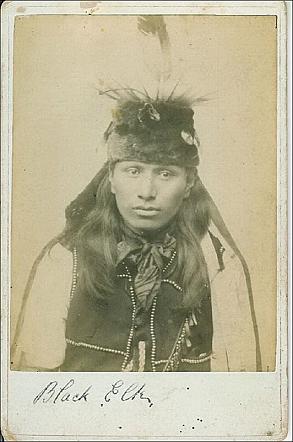
"It was in the Moon of Shedding Ponies [May] when we had the heyoka ceremony. One day in the Moon of Fatness [June], when everything was blooming, I invited One Side to come over and eat with me. I had been thinking about the four-rayed herb that I had now seen twice--the first time in the great vision when I was nine years old, and the second time when I was lamenting on the hill. I knew that I must have this herb for curing, and I thought I could recognize the place where I had seen it growing that night when I lamented.
After One Side and I had eaten, I told him there was a herb I must find, and I wanted him to help me hunt for it. Of course I did not tell him I had seen it in a vision. He was willing to help, so we got on our horses and rode over to Grass Creek. Nobody was living over there. We came to the top of a high hill above the creek, and there we got off our horsesand sat down, for I felt that we were close to where I saw the herb growing in my vision of the dog.
After I had sung this song, I looked down towards the west, and yonder at a certain spot beside the creek were crows and magpies, chicken hawks and spotted eagles circling around and around.
Then I knew, and I said to One Side: "Friend, right there is where the herb is growing." He said: "We will go forth and see." So we got on our horses and rode down Grass Creek until we came to a dry gulch, and this we followed up. As we neared the spot the birds all flew away, and it was a place where four or five dry gulches came together. There right on the side of the bank the herb was growing, and I knew it, although I had never seen one like it before, except in my vision."
Black Elk Speaks by John G Neihardt
http://www.firstpeople.us/articles/Black-Elk-Speaks/Black-Elk-Speaks-Index.html


